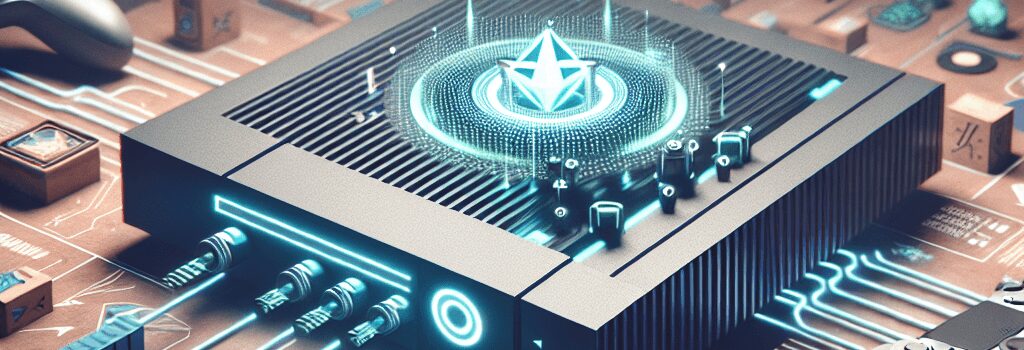Nvidia Powers Nintendo Switch 2 with Advanced DLSS, G-Sync, and Ray-Tracing Capabilities

In an exciting development for both gamers and tech enthusiasts, Nvidia has confirmed that the upcoming Nintendo Switch 2 will feature a custom Nvidia processor designed to offer significant graphical enhancements. According to statements from Nvidia Software Engineering VP Muni Anda and Nintendo executives during recent reveal events, the new handheld will integrate industry-leading technologies such as Deep Learning Super Sampling (DLSS), G-Sync, and dedicated ray-tracing cores, paving the way for a superior visual experience.
Technical Specifications and New Capabilities
The Nintendo Switch 2 is set to house a GPU that is reportedly 10 times faster than that of its predecessor, promising smooth and highly detailed graphics. Although details on the precise Arm CPU architecture, overall RAM, and memory speed are still under wraps, several key features have been confirmed:
- DLSS Upscaling: The integration of Nvidia’s DLSS technology will allow the console to render games at lower resolutions while upscaling them to near-native quality. This technology leverages AI-driven processing using tensor cores, reducing the performance hit that typically accompanies native high-resolution rendering. With the DLSS enhancement, titles aiming for 4K visuals or 120 FPS at 1080p are expected to run smoother and with better image fidelity than ever before.
- G-Sync Technology: G-Sync support on the Switch 2 will eliminate screen tearing by synchronizing the display’s refresh rate with the GPU’s output. However, Nvidia noted that this feature is exclusive to handheld mode currently, suggesting potential limitations when the device is docked, likely due to the HDMI output specifications of the dock.
- Dedicated Ray-Tracing and Tensor Cores: The inclusion of hardware-accelerated ray-tracing ensures realistic lighting, shadows, and reflections in supported games. Even though the underlying architecture is based on Nvidia’s Ampere design—akin to the GeForce RTX 30-series—the enhancements are expected to bring real-time ray-tracing capabilities to a portable device, a leap forward from previous hardware generations.
Deep-Dive into Nvidia Chip Architecture
Early indicators suggest that the Switch 2 may leverage a variant of the Nvidia T239 chip, possibly a cut-down version of the Orin T234 that powers automotive and industrial applications. This chip adheres to Nvidia’s Ampere graphics architecture, ensuring compatibility with the full suite of DLSS models and hardware-accelerated ray-tracing. Notably, while Ampere supports most DLSS enhancements, it does not support the recently announced DLSS Frame Generation—a feature reserved for Nvidia’s newer GeForce 40- and 50-series GPUs.
Expert analysis within the semiconductor community has highlighted that this choice of architecture will not only boost the device’s graphical performance but also ensure energy efficiency, an essential factor for battery-operated handheld consoles. The decision to embed a chip based on industrial-grade performance could potentially future-proof the Switch 2, enabling it to handle complex rendering tasks in next-generation titles.
Comparative Insights with Previous Hardware Generations
The original Nintendo Switch, while revolutionary in its time, had limitations that prevented it from utilizing advanced graphical features fully. For instance, even though some titles like The Legend of Zelda: Tears of the Kingdom attempted to squeeze out extra performance using AMD’s FidelityFX Super Resolution technology, the aging hardware often fell short of the standards demanded by modern graphical techniques.
In contrast, the Switch 2’s integration of DLSS, G-Sync, and ray-tracing marks a significant advancement over previous generations. This leap in hardware capabilities not only ensures that newly developed games will benefit from high visual fidelity and smoother gameplay but may also inspire developers to adopt richer graphics and more complex rendering techniques in portable gaming experiences.
Future Prospects and Industry Implications
With Nvidia at the helm of the graphical enhancements, the collaboration between Nintendo and the tech giant showcases how modern AI-powered technologies are transforming gaming. The deployment of AI-driven upscaling with DLSS and the optimized rendering pipelines through dedicated hardware cores indicate a broader industry trend where portability does not come at a cost to performance.
Moreover, recent insights suggest that future firmware updates might expand support for additional Nvidia technologies, potentially even integrating software-based DLSS refinements that could allow improved capabilities even in docked mode. Analysts believe that these steps will further bridge the gap between mobile and console gaming performance, setting new industry benchmarks.
Expert Opinions and Market Reactions
Industry experts have lauded the Switch 2’s anticipated hardware upgrades. Dr. Elena Ruiz, a semiconductor research analyst, noted, “Integrating features like DLSS and hardware-accelerated ray-tracing in a handheld device is a testament to how far mobile silicon has come. This could redefine gamers’ expectations for portable entertainment.”
Furthermore, early reactions from the gaming community on social media and tech forums have been overwhelmingly positive. Enthusiasts are particularly excited about the potential for 4K and high-frame-rate gaming on a portable platform, anticipating that these innovations might set a new standard for gaming on the go.
Conclusion
The confirmation of Nvidia’s advanced graphical technologies in the Nintendo Switch 2 signals a significant shift in the capabilities of handheld gaming devices. With features like DLSS, G-Sync, and ray-tracing, Nintendo is poised to offer an experience that rivals many traditional home consoles. As both companies continue to tease further technical details, the market eagerly awaits more in-depth specifications and real-world performance benchmarks, promising an exciting future for portable gaming.